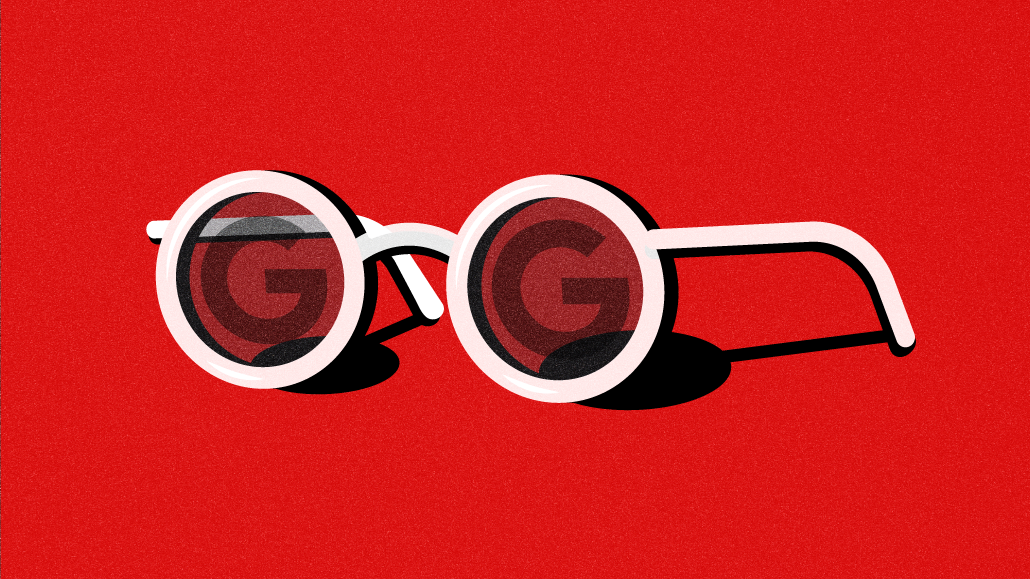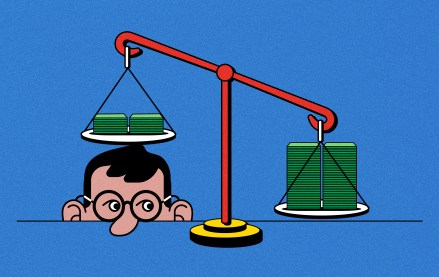Insights from CTV leaders at Dentsu, Horizon Media and more
Google rolls out more tools for advertisers — including new formats for AI-generated search

Less than a week after expanding AI-generated search, Google is already bringing ads to its AI Overview feature.
Alongside an array of other ad-related updates, Google is testing new ways to serve ads above, below and inside automatically generated summaries of query results distilled from different sources. AI Overview ads — which use advertisers’ existing search, shopping and Performance Max campaigns — debuted Tuesday during Google Marketing Live.
At a press event in New York, Google execs declined to disclose how many advertisers and users are part of tests for AI Overview ads. However, the search giant gave one example of showing ads for Downy and Bounce from retailers like Instacart and Walmart when users ask how to remove clothing wrinkles. Another new search format lets users upload images and various criteria to find products based on their shopping needs.
“It helps you to have a really tailored recommendation before you get to that point of needing to go through the process on the website,” Rachel Melgaard, Google’s director of global search ads, said at the press preview. “It’s a really exciting end-to-end experience for the consumer and allows the advertiser to work with the consumer before the purchase occurs.”
AI Overview ads was just one of many new ad formats and features announced on Tuesday. Others include:
- AI-assisted brand guideline tools for Performance Max campaigns;
- AI image editing tools for removing or adding to parts of an image ad;
- image creation tools using reference photos;
- animated ads from still images;
- visually focused brand profiles for with product images, videos and reviews;
- expanded access to Ads Data Manager for all advertisers;
- and expanding existing formats like virtual try-on ads and products ads that spin 360 degrees.
Google isn’t the only company quickly rolling out new advertising features powered by generative AI. Others include Meta, which recently released its own suite of AI-generated ad formats for image creation and optimization through its Performance Max rival Advantage Plus. Meanwhile, Microsoft — which hosted its own keynote yesterday for its Microsoft Build conference — is also developing new generative AI tools for advertising. Another upcoming player is Perplexity, a startup that plans to introduce ads for its generative AI search platform later this year. Other online platforms have generative AI tools for advertisers include Snap, TikTok, Reddit and Nextdoor.
Despite all the innovations, there are also plenty of concerns. Publishers, advertisers and digital rights experts are worried about how overhauling search with generative AI could harm media companies, small businesses, creators and advertisers with less traffic and less revenue. Google is still in the middle of an antitrust trial related to its search business and has another antitrust trial for its digital advertising business scheduled for September.
The goal of the new tools is to steer Google’s generative AI to create more on-brand creative assets, according to Brendon Kraham, Google’s vp of search and commerce global ad solutions. Google will also provide more recommendations to advertisers to help marketers make creative decisions based on their creative assets and campaign goals. However, he said advertisers still have control and final approval of creative.
“Certainly that depth and breadth of creative assets [is] kind of at the center of it on top of the marketing objective side,” Kraham told Digiday before Google’s announcements. “But we also know that having creative that performs well isn’t enough — it has to be on-brand.”
Google’s latest AI integrations mark a “transformative moment in the evolution of digital marketing,” said Jim Lecinski, clinical professor of marketing at Northwestern University’s Kellogg School of Management. He also cited other updates like Google allowing marketers to optimize search campaigns for profit rather than just clicks or return on ad spend.
“I am particularly impressed by Google’s strategic focus on enhancing creativity, personalization, and user engagement through AI,” Lecinski said. “These innovations signify a paradigm shift towards more efficient, personalized, and engaging advertising, setting a new standard in the industry.”
During the Google Marketing Live press preview on Tuesday with Google and brand execs, Mike Jacobs, Etsy’s vp of growth, said he’s excited about using generative AI across marketing especially as marketers are able to add in more data signals. Jacobs recognizes the potential for generative AI and has had some good results. For now, he sees it as a workflow tool rather than anything ready for prime time — at least not yet. He also noted the importance of ad creation formats will be deployed at scale.
“We’re at 120 million products, all with different images, and so permissions of working with our sellers for what we are allowed to do, whether it’s ours or someone else’s brand controls all of that,” Jacobs said. “The technology is definitely getting there…Will we get to a point where we’ll be willing to cede that power? I don’t think the industry has gotten there yet, but I do think Google is a big part of leading the way there.”
More in Media Buying

When should an agency go the ESOP route, and what are the risks?
Boiled down to their essence, ESOPs are when an owner or founder sells their stake in an agency to the employees who all receive stock, most often held in a trust.

Media Buying Briefing: The upfront isn’t moving along for a few surprising reasons
The marketplace is being slowed down due to increasing complexity, and discrepancies with Nielsen’s latest ratings system.

As Integral Ad Science marks its fourth anniversary on the Nasdaq, speculation mounts over its future
Efforts are underway to take IAS private but there are varying levels of interest from private equity groups.





